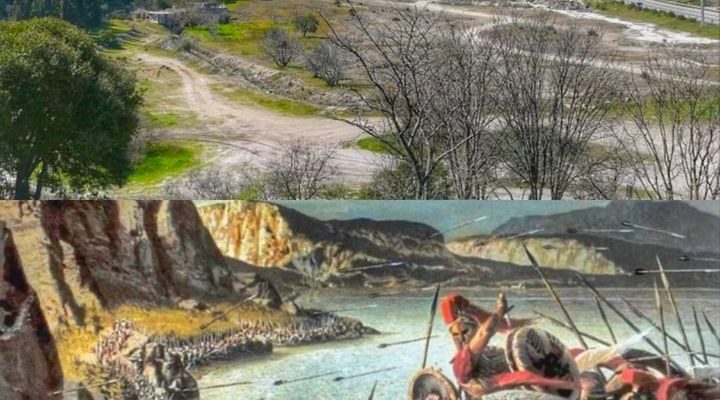The top photo shows the site of the famous battle of Thermopylae, which took place in 480 BC. The bottom picture is a cool painting by Louis S. Glanzman, which depicts the battle in its final moments as the Spartans and approximately 1,000 other Greeks made their last stand against the Persian army on Kolonos Hill.

The Spartans are known in modern culture as warriors and soldiers of exceptional renown who dedicated their entire lives to fighting and perfecting their soldiering abilities. The legend of the 300 Spartans who defended the pass at Thermopylae is well known. Poetic license has, however, skewed the facts and changed various details for the sake of indulging our desire for stories of heroism. Despite Hollywood’s artistic sensibilities, the realities of what happened during the Battle of Thermopylae are no less heroic. This is how the Spartans lived, fought, died, and finally resurrected in story and fable to live on forever in legend.
Background to the Battle of Thermopylae
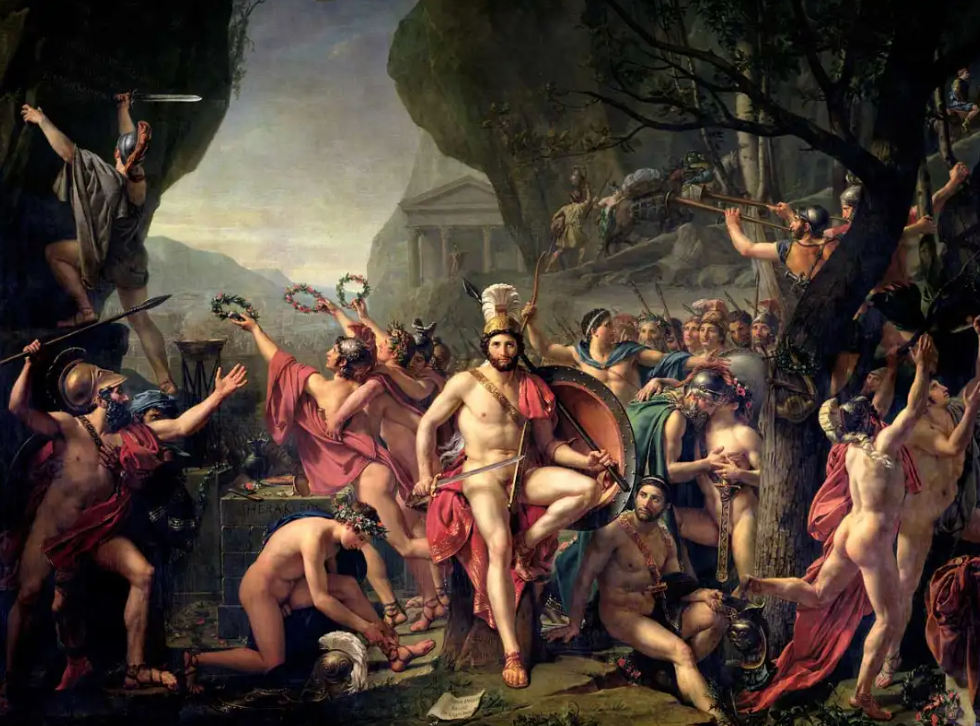
In 492 BCE, Darius I of Persia launched an invasion of Greece. With around 26 000 to 28 000 men and a massive navy of 600 triremes, the Persians sought to subjugate all of Greece. Although they managed to take Macedon and Thrace, the invasion was, for all intents and purposes, a complete failure. An outnumbered Greek army stunned the Persians at the Battle of Marathon in 490 BCE and sent the Persians home in defeat.
After the death of Darius, his son Xerxes I, began preparing for a second invasion of Greece. With a land force easily in excess of 100 000 men and an invasion fleet of between 600 to 1200 triremes, this force dwarfed the previous one, as well as the combined forces that the Greek city-states could muster. The Battle of Thermopylae was the first engagement of the war.
The Armies Assemble
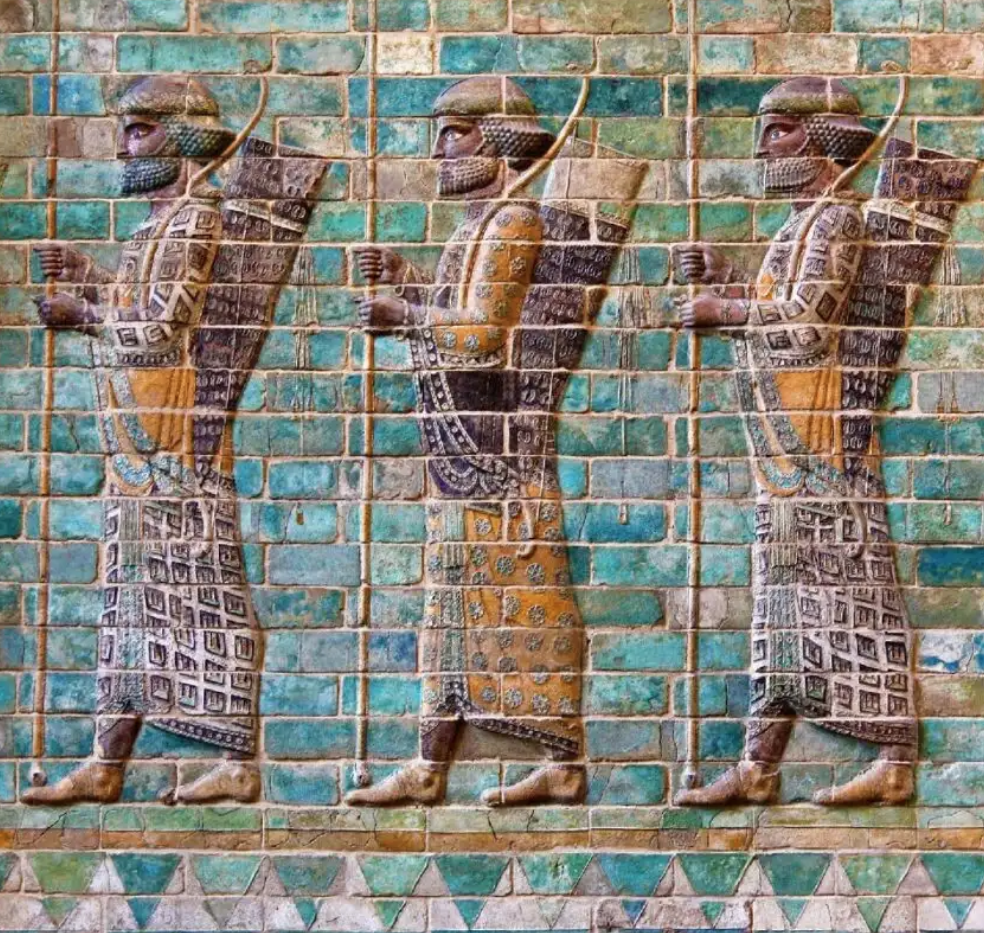
Ancient historians made claims that the Persian army numbered 3 million men. This was, of course, an exaggeration, but it needn’t have been so. Modern estimates put the size of the army between 120 000 and 300 000. Against them stood a relatively tiny army of 7000 Greeks led by the famous 300 Spartan hoplites that had marched north to block a small pass that opened up into the rest of Greece. This pass was called Thermopylae, or in English, “Hot Gates”.
At the time, the Spartans were celebrating a sacred festival that did not permit any military action to be taken. Upon hearing of the Persian army’s approach and the danger it posed, it was decided that the Spartans would send a small force — just 300 Spartan hoplites and 900 perioikoi — to impede the Persian advance. They would gather allies as they marched north to confront the enemy. At the head of the army was the Spartan King Leonidas. By the time the Spartans had reached the pass, the army had been reinforced by contingents from various city-states, including Mantineans, Tegeans, Arcadians, Corinthians, Phlians, Mycenaeans, Thespians, Malians, Thebans, Phocians and Eastern Locrians. Each city or town could only muster a few hundred soldiers at best.
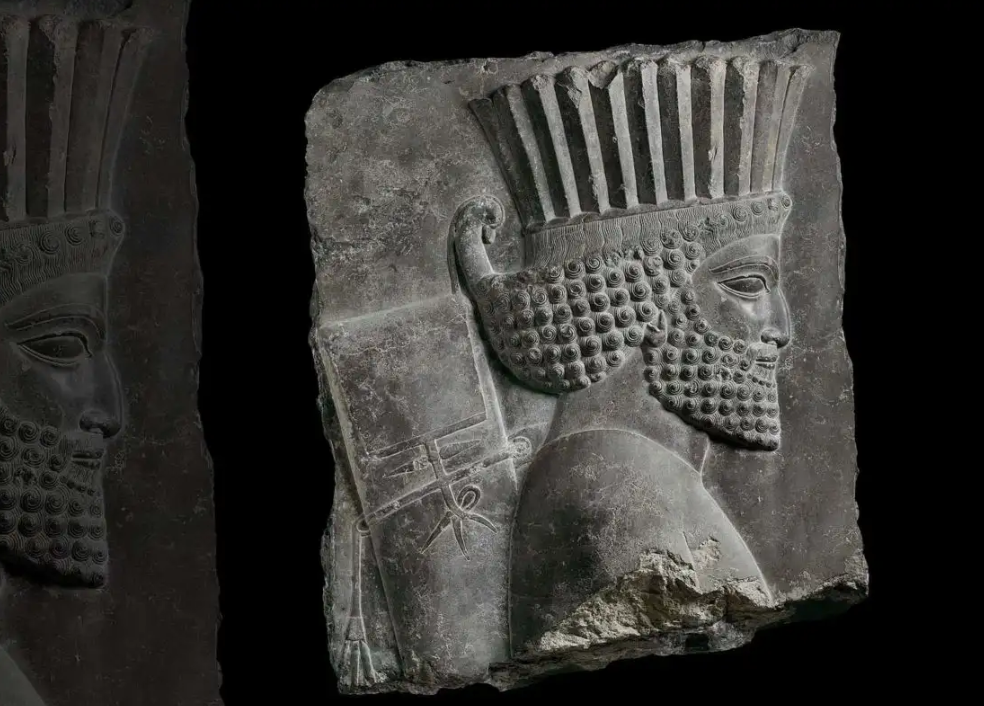
According to Plutarch, when one soldier complained that the Persians would release so many arrows that they would block out the sun, Leonidas replied, “Won’t it be nice, then, if we shall have shade in which to fight them?”. According to the Greek historian Herodotus, the response was given by a man named Dienekes. Either way, “We shall fight in the shade” is used today as the motto of the 20th Greek Armored division.
When the Greeks arrived, King Xerxes sent a messenger urging them to surrender and lay down their arms. Leonidas is said to have replied “Molon Labe”, which translates roughly into “come and take them”. It is the motto of the I Army Corps of Greece.
After waiting four days, hoping for the Greeks to lose hope and disperse, Xerxes decided to attack.
The Geography of The Battle Of Thermopylae
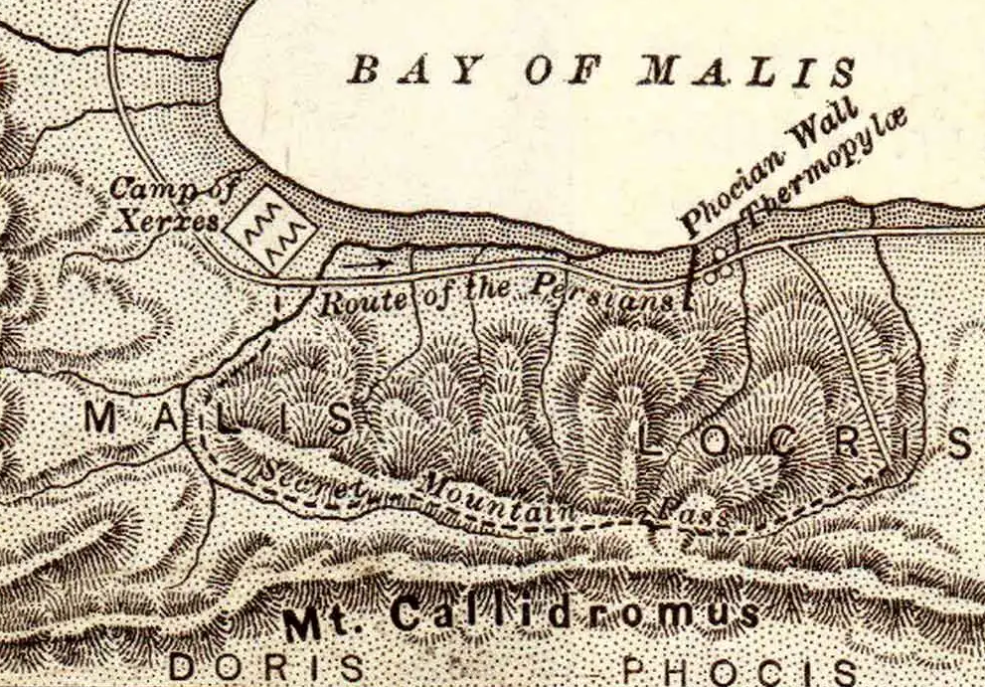
The Greek strategy was one of delaying the Persians as long as possible. They could remain on the defensive while the logistical considerations of keeping the Persian army in the field wore the Persians down. This delaying tactic also gave the rest of Greece the time it needed to mobilize more forces.
The pass of Thermopylae was a perfect place for the Greeks to deprive the Persians of their numerical advantage. With the sea on one side and high impassable cliffs on the other, the Spartans chose the narrowest point to make their stand. The region’s geography has changed over the millennia, and it is debated how wide the pass actually was at the time, but it is usually accepted that where the Spartans decided to form up, it was between 12 and 30 meters wide (about 40 to 100 feet). This was also the site where the Phocians had built a defensive wall, the remnant of which would help the Greek defensive position.
The Battle Begins
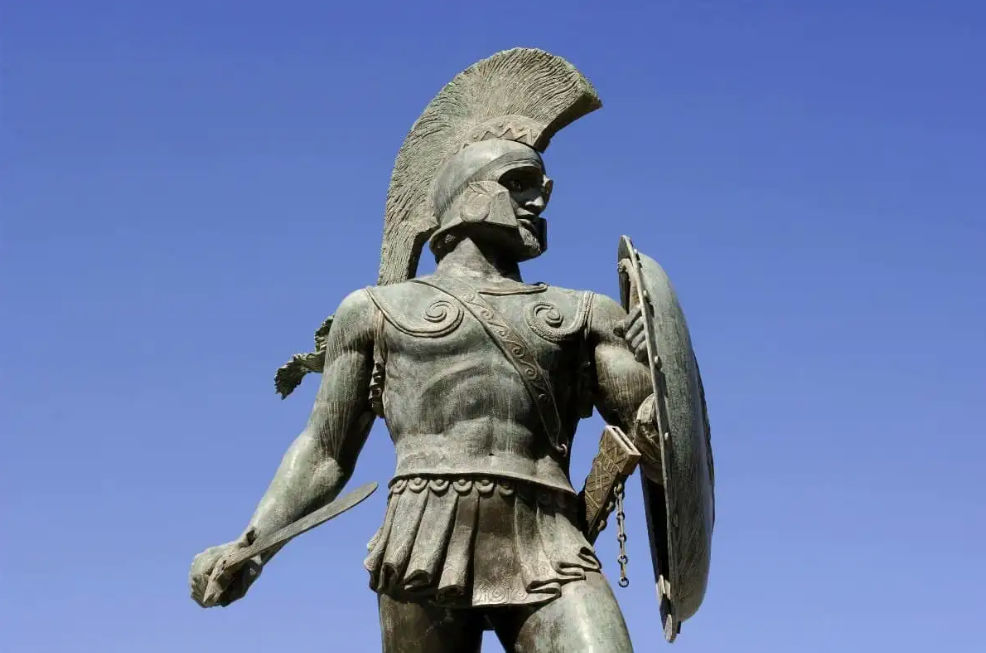
On the first day of The Battle of Thermopylae, Xerxes launched a barrage of arrows that did no damage to the Greeks, who were well-protected by their armor, shields, and bronze helms. The Greeks fought in phalanx formation. With their shield overlapping, they presented an almost impenetrable wall from which they could strike at their foes with their spears. Xerxes then sent 10 000 Medes at the Greeks, but achieved very little. They had shorter spears and swords, and their armor and shields were little more than cloth and wicker. The Spartans held against the Medes, who according to Greek historian Ctesias were “cut to ribbons”. The Greeks lost only two or three men in this initial assault.
The Greeks formed several ranks deep and were able to cycle fresh troops to the front at regular intervals, which prevented fatigue. After the failure of the Medes, Xerxes sent his 10 000 elite troops, the Immortals, to break through, but they fared no better than the Medes. On the second day, Xerxes again sent waves of infantry against the Greeks but achieved no more success than on the first day. Later in the day, however, Xerxes received a Greek Trachinian named Ephialtes, who informed the Persian king that there was a secret footpath that led through the mountains and emerged behind the Greek force. That evening, Ephialtes led a force of 20 000 Persians on the secret path. The 1000 Phocians that Leonidas had ordered to guard the pass, put up little resistance and fled after being pelted with a barrage of arrows. When the news reached Leonidas, he held a council of war.
The Final Stand of Leonidas and the 300 Spartans

On the third day, it was clear that the Greeks were surrounded, and there was no hope for victory. Leonidas allowed the other Greek contingents to decide whether to stay or leave. The 300 Spartans and their helots would stay. The 700 Thespians and the 400 Thebans decided to stay as well. For the Thespians, this was particularly notable in that these soldiers represented every single hoplite the city could muster.
The Persians approached, and the Greeks sallied forth, trying to kill as many Persians as possible. Leonidas died in this assault, and many of the Thebans tried to surrender. Those that weren’t killed were captured and branded.

Against Persian infantry and light cavalry, the Spartans and their allies fought to the death. Herodotus states that when their spears broke, they used their swords, and when they had no swords, they fought with their hands and teeth. Eventually, the Persians had the Greeks completely surrounded and finished them off with arrows.
The widely accepted reason these Greeks decided to stay and fight, knowing that they would die, was as a rearguard action to allow the other Greeks to escape. Had the Persians not been held up on the third day, they would have been able to catch up to the retreating Greeks and slaughter them. It was thanks to the Spartans, the Thespians, and the Thebans, that thousands of Greek soldiers would live to fight another day.
The Movie 300
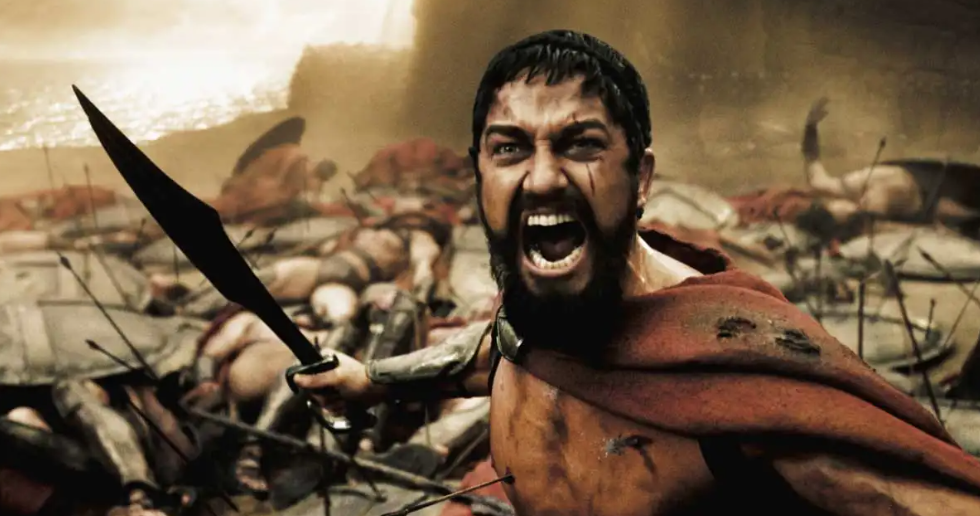
In 2006 the movie 300 was released, and it caused much debate for many reasons. For those looking for historical accuracy, it was particularly disappointing as the movie was intended as a heavily stylized fictional retelling and was based on a graphic novel.
The movie also garnered criticism as being culturally insensitive, racist, and stoking the flames of cultural antagonism. The early 2000s was marked by war between Western nations and countries in the Middle East, and the film was accused of adding to the tension.
The main antagonist, Xerxes, was also depicted as being homosexual, and the director, Zack Snyder, is quoted as having said of the portrayal of Xerxes, “What’s more scary to a 20-year-old boy than a giant god-king who wants to have his way with you?”. Iran (as the eventual successor to Persia), was particularly angered by the depiction of the Persians as decadent, sexually flamboyant, and evil.
Nevertheless, the film was a box-office hit, and like film and media before, it once again reminded the world of the legend of Thermopylae, which will forever be etched in human memory as a perfect example of a valiant last stand. It also paved the way for a sequel.
Who Won the Battle of Thermopylae?
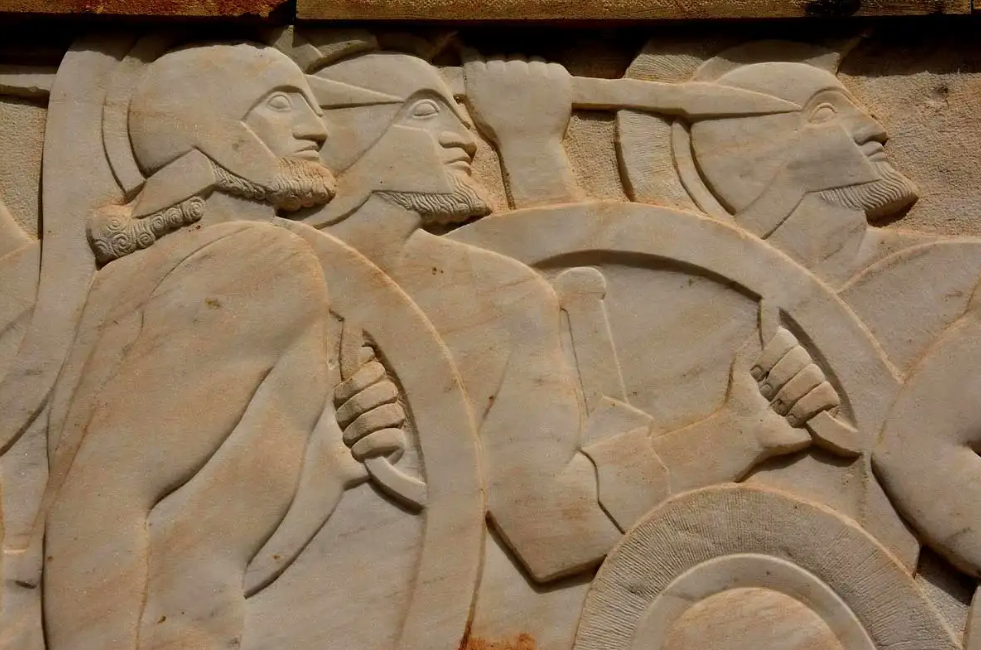
The Battle of Thermopylae was a pyrrhic victory for the Persians. They eventually took the pass and continued their campaign across Greece, but news of the battle spread, invigorating Greek morale while at the same time dealing Persian morale a major blow. The following months would see more Greek victories on land and at sea. The 2nd Greco-Persian War would end, like its predecessor, in complete defeat for the Persians.
